Resources for beginners
[ << ]
Scratch and Scratch-like coding
( by age )

|
It is hard to see how they are the same, but the "Logo" computer language used to control robot "turtles" was the start of Scratch. Some versions of Logo allow you to code if you're too little to read. They use arrows to make a robot move. You can do this on Bee-bots. You can start coding by getting a robot to move across to something or around a maze. |

|
You can make simple arrow-based programs onscreen with Bee-Bots and Light-bot. Non-readers will need some help. There is also a arrow version of Logo "2go" and a typed version on Purple Mash. |
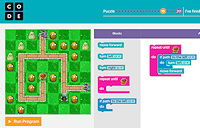
|
Hour of Code builds on logo to start with Scratch-like coding. New versions of Scratch are based on a language like Javascript. One of the nice things about Hour of Code is you can see this code as well. |
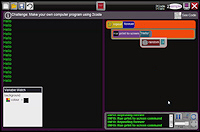
|
For primary school level lessons there is 2Code on Purple Mash. You can only do a few things with 2Code, but the lessons are really good. One of the nice things about 2Code is it's "debugging challenges", which get you to fix broken code. This is a key skill but most sites don't teach it. 2Code also shows you the code behind the Scratch-like language. |

|
For the full Scratch you can go to the Scratch website (click "Create" at the top). This lets you save and share code. There's also an older version you can download, but it isn't as good. For the website version there is a good getting started lesson. Simple things to start with after that are making a moving card or a simple game. You may hear of BYOB ("Build Your Own Blocks") which was a version of Scratch that allowed you to build your own blocks. This option is now built into the web version of Scratch. Note that if you get children to sign up for accounts and share projects they will be sharing their code with the world, so you may want to monitor for local content, names etc. In addition, you may want to get them to turn off commenting on each project shared. The site is broadly self-moderated, but I've never seen anything bad on it. The default is not to share. |
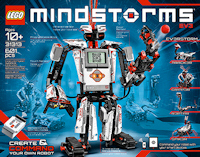
|
For older primary there's Lego Mindstorms. This lets you program Lego robots with a Scratch-like language. The robots cost money, but are worth it. There are a variety of education packs, including packs for making sensors for monitoring the real world. Although Lego say it is for secondary level, anyone who can read can use Mindstorms. There is also Enchanting. This lets you control a version of Scratch onscreen using Lego to build controllers. |
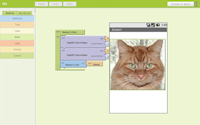
|
For advanced primary (and everyone!) there's AppInventor. This lets you make apps for Android mobile phones using a Scratch-like language. The apps can also control Mindstorms from your phone. |

|
You can also attach Scratch to sensors to measure the real world, using Picoboards. Obviously these cost money, but they take programming out into the real world. You can also control Scratch games (indeed, any software) using MaKey MaKey, which lets you use household objects (like bananas!), as well as drawings, as a replacement for keyboards and the mouse. There's also Kano, which is still in development, but which is promising to bring Scratch-like programming on a simple computer, including Scratch-like programming of Minecraft. |
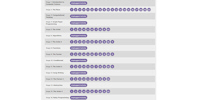
|
For early secondary level there are good lessons and lesson plans at Code.org. |
iPads

|
iPads aren't the greatest platform for learning coding on because often there's a lot of typing, but there are some nice free apps at the Scratch level. For the littlest, there's a Bee-bot app and Kodable. For those with basic reading skills, there's Daisy the Dinosaur, which falls somewhere between Logo and Scratch, along with a couple of different versions of Lightbot aimed at different levels (also available for Android). |
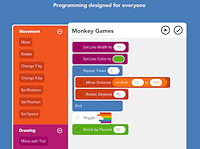
|
For those who can read fully, the Daisy the Dinosaur people also make Hopscotch (official site), which is a popular Scratch-level environment. There's also an Hour of Code site for it. Similar is Tynker, an app from a commercial US company called Tynker that also offers broader teaching support in the US. Apps you can buy include Cato's Hike (review) and Kodable Pro. |
As you can see, you can do some quite good stuff with Scratch, and people do. It's not just for people learning to code. However, if you want to go further than Scratch, here's some advanced resources.
